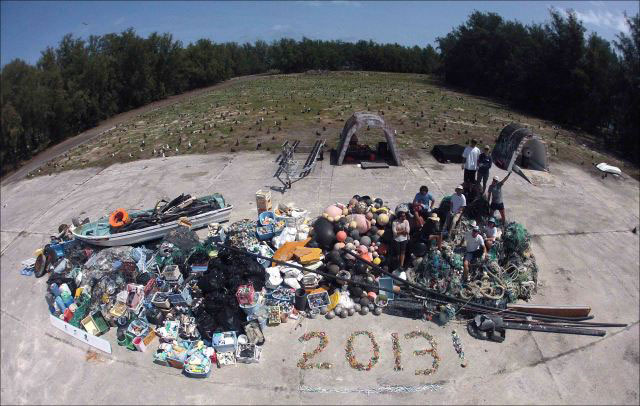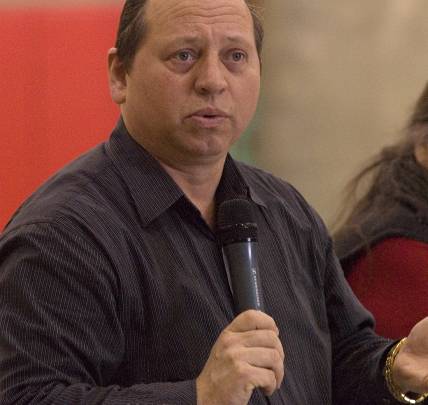Gyasi Ross, Indian Country Today Media Network
I know this is sorta late—two weeks, to be exact—and that pop culture topics du jour tend to last only a few days. Modern day pop culture existential question: If someone gets killed on Twitter and it’s no longer trending, did it really happen?
I don’t know; that’s above my pay grade.
Still, one of my friends—a short Lakota woman—texted me right after the Seminole County jury acquitted George Zimmerman of all charges in the brutal killing of Trayvon Martin and asked, very appropriately, “How come the Native community is not outraged about this?”
I never responded—I’m sorry, Kim. But I was too caught up in emotion right after the verdict to really elicit a proper response. So this is my attempt to give a few rambling, stream-of-consciousness thoughts on the Trayvon Martin tragedy. Native media responses to pop culture phenomena like Martin (“Native media responses” must necessarily be separated from “Native responses,” because I find that most Native people who write in Native publications are very separated from the Native world that I live in, communicate in and work in every single day), and why we have a vested interest in partaking in the larger conversations like those surrounding the Martin tragedy.
THOUGHTS ON THE TRAYVON TRIAL
I’m conflicted. As an attorney I have to acknowledge that George Zimmerman getting acquitted was the correct legal result. In fact, this case probably should have never gone to trial. The way the Florida’s self-defense laws are written (and the barbaric “Stand Your Ground” law, which the defense chose to forego yet was clearly always there in the shadows), it essentially gives a license to kill as Zimmerman had “no duty to retreat and had the right to stand his ground and meet force with force” as long as he reasonably feared for his life or great bodily harm. The only thing left to show is that he was reasonably afraid—in the dark, on your own property, that’s pretty easy to do.
Legally, it was the correct decision.
Yet, as a father of a young man of color, I have to acknowledge that I think George Zimmerman should be hung. As an uncle and mentor to many, many boys of all colors, I have to acknowledge that I’d have to fight the compulsion to hunt this man down, rightly or wrongly, if he stole their young, vibrant lives like he did to Trayvon. There’s a mother and father who will never get to love, embrace, scold or chastise their precious boy again. He was 17, but as any parent knows, they’re always your baby.
George Zimmerman brutally and unnecessarily killed someone’s baby. And that’s unforgiveable.
NATIVE MEDIA RESPONSES TO THE TRAYVON TRAGEDY
The Native media responses to the Trayvon Tragedy, and other “non-Indian events” that profoundly affect Native people are very, very few and far between. And not necessarily for the right reasons. I saw a couple of stories by Native authors—one by Ruth Hopkins another by Jacqueline Keeler—that passionately talked about it. They are both mothers and I think that parents think about the loss of a child and are prompted to action. I also saw one from Oliver Semans who did a really good job of connecting how this case affects Indian country. But for the most part, if you scan the latest headlines of any of the Native publications, you’d pretty much think that this travesty didn’t happen. In fact, if someone were to look at a good portion of Native media they’d think that renaming the Redskins or mascots or hating Johny Depp’s rendition of Tonto were the top priorities to most Native people.
Outsiders looking into Native media and seeing those things—Tonto, mascots, etc—would likely say, “Gee, that’s all Native people have to worry about? I guess those casinos are working and their lives are pretty damn good. We have to worry about getting killed and the recession—all they have to worry about is Tonto.”
The truth is that most Native people don’t care about that stuff. When I’m at home on the reservation, no one talks about these things. When I’m at pow wows or on the canoe journey, no one asks me about these things.
They are academic issues; ultimately it’s good that someone covers them, but they are not conversations that come up regularly within Indian country despite appearances to the contrary.
On the other hand, the Trayvon tragedy, unfortunately, hits much closer to home than those first-world problems. Like Trayvon and countless other young black men, our young Native men are literally dying, likewise falling victim to the presumption that brown men are always criminals, always doing something wrong. White supremacy. A few names come to mind—John T. Williams, Jack Keewatinawin, Daniel Tiger, Christopher Capps, Clinton Croff, AJ Longsoldier, the list goes on and on—their major crime was being Native. That’s why they are dead. Like Trayvon—he’s dead because he was black.
I read someone say that Native people’s “Trayvon Martin moment” was the recent Baby Veronica case. That statement is an insult to the dead and a curse to the living. Thank God that Baby Veronica is still alive—she is still with us, and that means that there’s still an opportunity for better outcomes. Trayvon Martin was brutally killed and unfortunately, there can be no good outcomes from it. Native people legitimately have many, many Trayvon Martin moments—we do not need to make them up. Do some research on any of the cases above—our people are getting killed out there.
To us within Native media: we should bring more attention to the tragedies that happen within our communities. They’re there. It’s up to us to bring those stories to light like the Black community did with Trayvon.
To our non-Native allies: there are a couple of legitimate reasons why there has been no critical mass of responses from the Native community—the “why should we” reason.
1) First, Native people have very little reason to have any amount of faith in the judicial system. From constantly seeing non-Natives acquitted for killing Native people (see the above names and multiply that by 1000), to the very foundational law of this Nation (read Johnson v. M’Intosh or Cherokee Nation v. Georgia or In the Courts of The Conqueruors by Walter Echohawk to begin to understand the profound lack of faith that Native people have and should have in US courts), we are used to getting screwed by the courts of the conquerors.
So why be outraged? In fact, it would be stranger for a Native person to expect a GOOD outcome from these courts. Unlike Black folks, Native people do not have a Brown v. Board of Education to hang our hopes on. These courts have been bad to us since day 1.
2) The other “why should we” is that there was no larger response from the Black community, the Hispanic community, the progressive community when that long litany of names, above, were killed by law enforcement for being Indian. So there is a sense of “Why should we contribute to this larger group of concerned citizens of color that doesn’t care about us?” Non-Native allies, you should help champion this message-it will help create this larger sense of community.
Not saying that this mindset is “right,” but it’s certainly understandable.
3) I suppose a third “why should we” reason is that, for the most part, Native people simply do not have the capacity to deal with someone else’s heartache. We have our own. Lots of it. If an entire block of houses are burning, everybody should absolutely help one another escape the fiery inferno. At the same time one could be excused for trying to make sure that his own family escaped the flames first.
All of our blocks are burning. It’s not that we don’t care—it’s that Native people, like others, have to save ourselves first.
But we are not isolated. It does not benefit us to simply put our collective heads in the sand and pretend that the Trayvon Tragedy or any of these larger pop culture movements do not affect us. They do. The Native media has to connect the dots and start working with other communities of color to stop our people from getting killed. That means stop pretending that these are isolated incidents and not things that we have to worry about.
Gyasi Ross is an enrolled member of Blackfeet and an activist, attorney and author.
Read more at https://indiancountrytodaymedianetwork.com/2013/07/30/1000-trayvons-all-people-color-must-unite-stop-slaughter


















